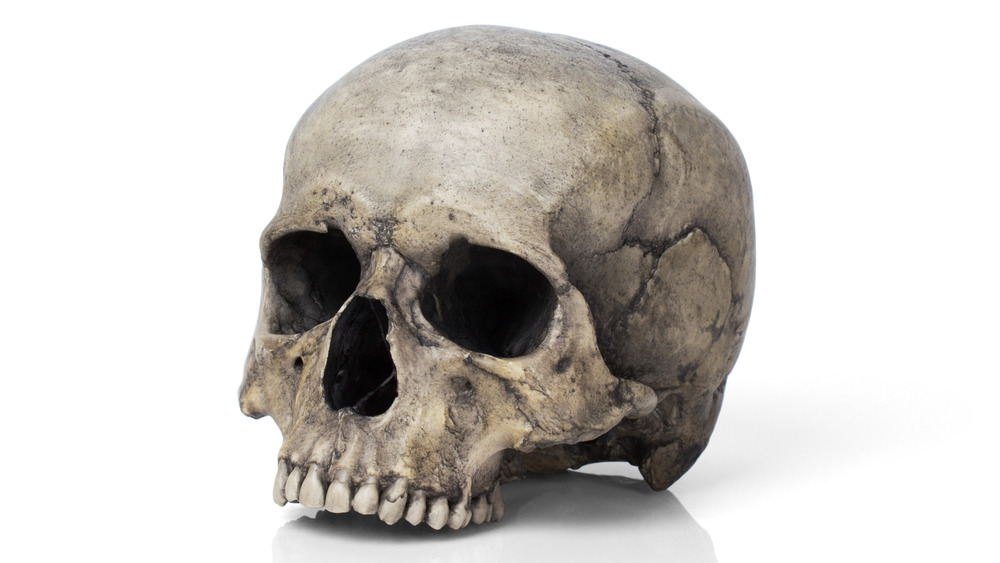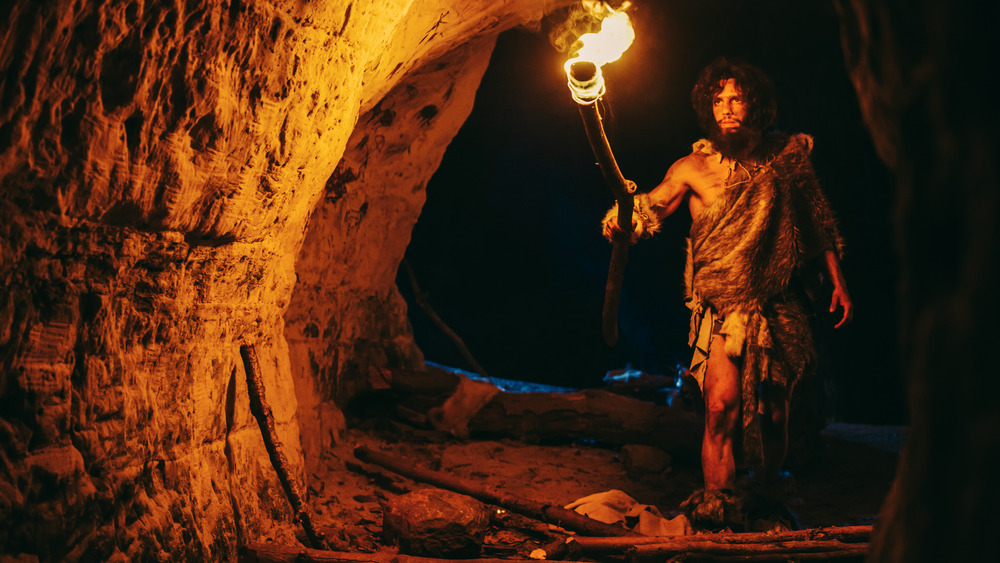This Is The First Known Murder Victim In History
In 2013, scientists found a mass grave at the bottom of a 43-foot shaft in a cave in Spain that has since come to be known as Sima de los Huesos, or Pit of Bones. They made a startling discovery after reconstructing a fossilized skull from 52 broken fragments. They found that the human whose head had been Cranium 17 was murdered, and according to History.com, at 430,000 years old, that made the person the first-ever known murder victim in history. Although they were unable to determine characteristics such as the sex of the person, two identical fractures on the left side of the skull, just over the eye, indicated that the person had most likely been killed.
But with such old evidence — the victim lived around 230,000 before our very own species, Homo sapiens, even appeared in Africa — how were the scientists able to make such a deduction? Let's take a look at the evidence and see how they came to their conclusion.
The wounds on history's first murder victim could not have been due to environmental factors
The bones were found at the bottom of what would have been a potentially deadly fall, so could the wounds not have been due to an unfortunate accident? According to National Geographic, the scientists compared the injuries on Cranium 17 to modern data on accidental falls and interpersonal violence and found that the only logical explanation would have to be a face-to-face attack from another person. They saw no evidence that the bones had begun to heal, indicating that the person either died immediately or very soon after being struck. The near-identical size and shape of the holes led them to believe that the cause of death was repeated blows to the head with the same object.
The bones are so old that they even predate the Neanderthals. Researcher Nohemi Sala and her colleagues identified the victim and the others in the shaft as members of an ancestor of the Neanderthals known as Homo heidelbergensis. As for a motive, that will be lost to history forever.
While History.com wrote that the bones were possible evidence of the first mass murder in the world, Sala said that the evidence doesn't point to such a conclusion. She said that the site resembled more of a ceremonial burial grounds, rather than a crime scene, indicating that Homo heidelbergensis had some sense of ritual and didn't just leave the dead to decay on the ground.

